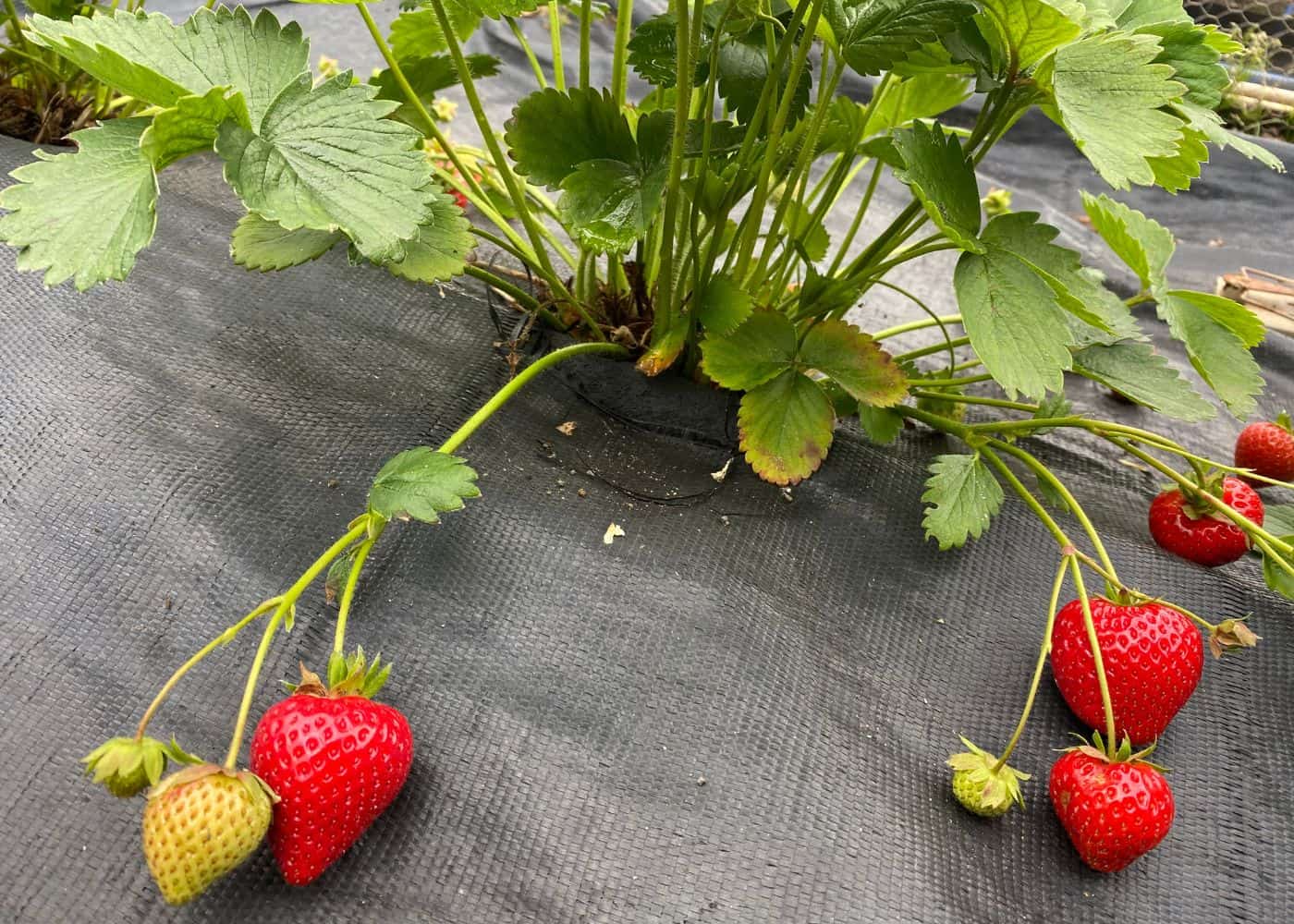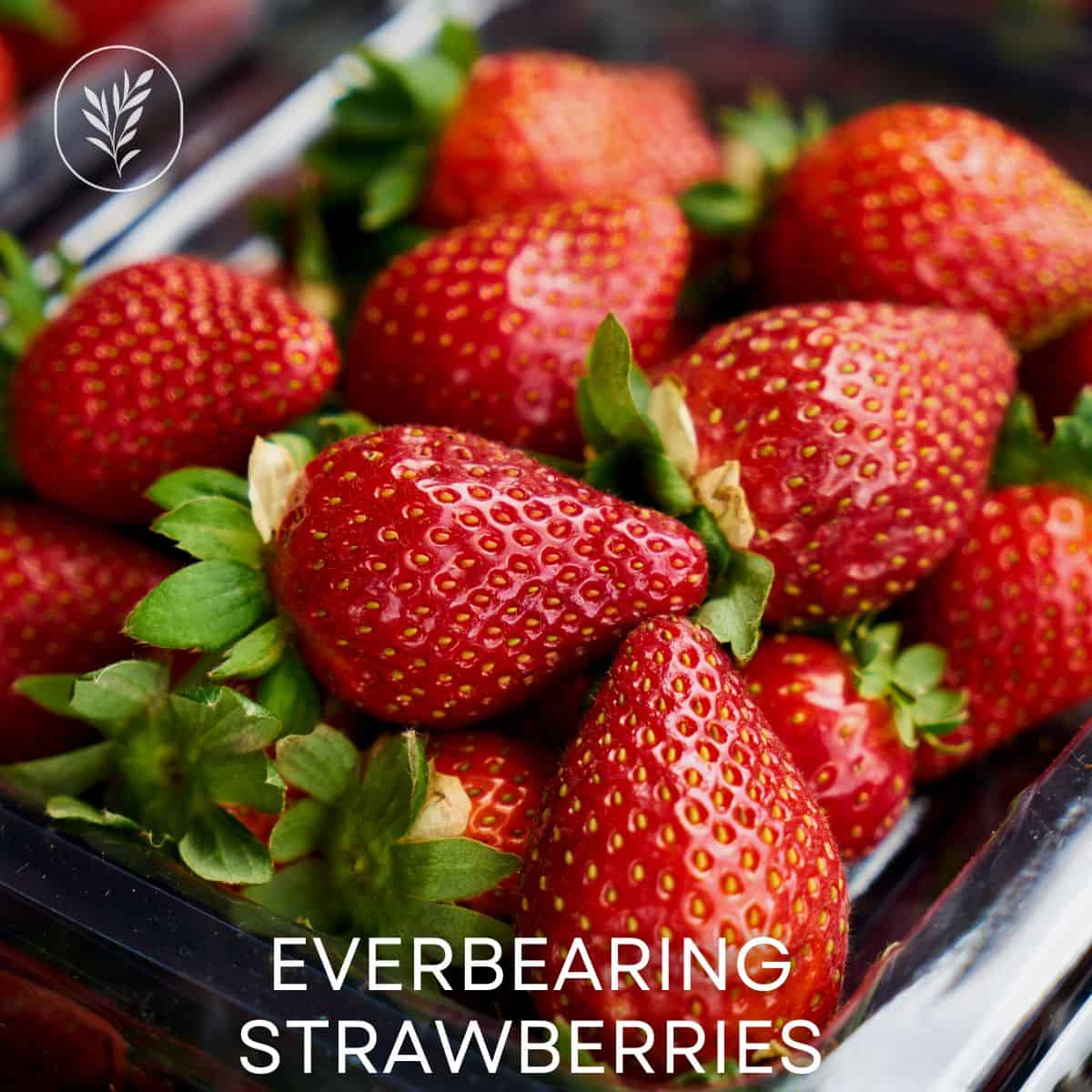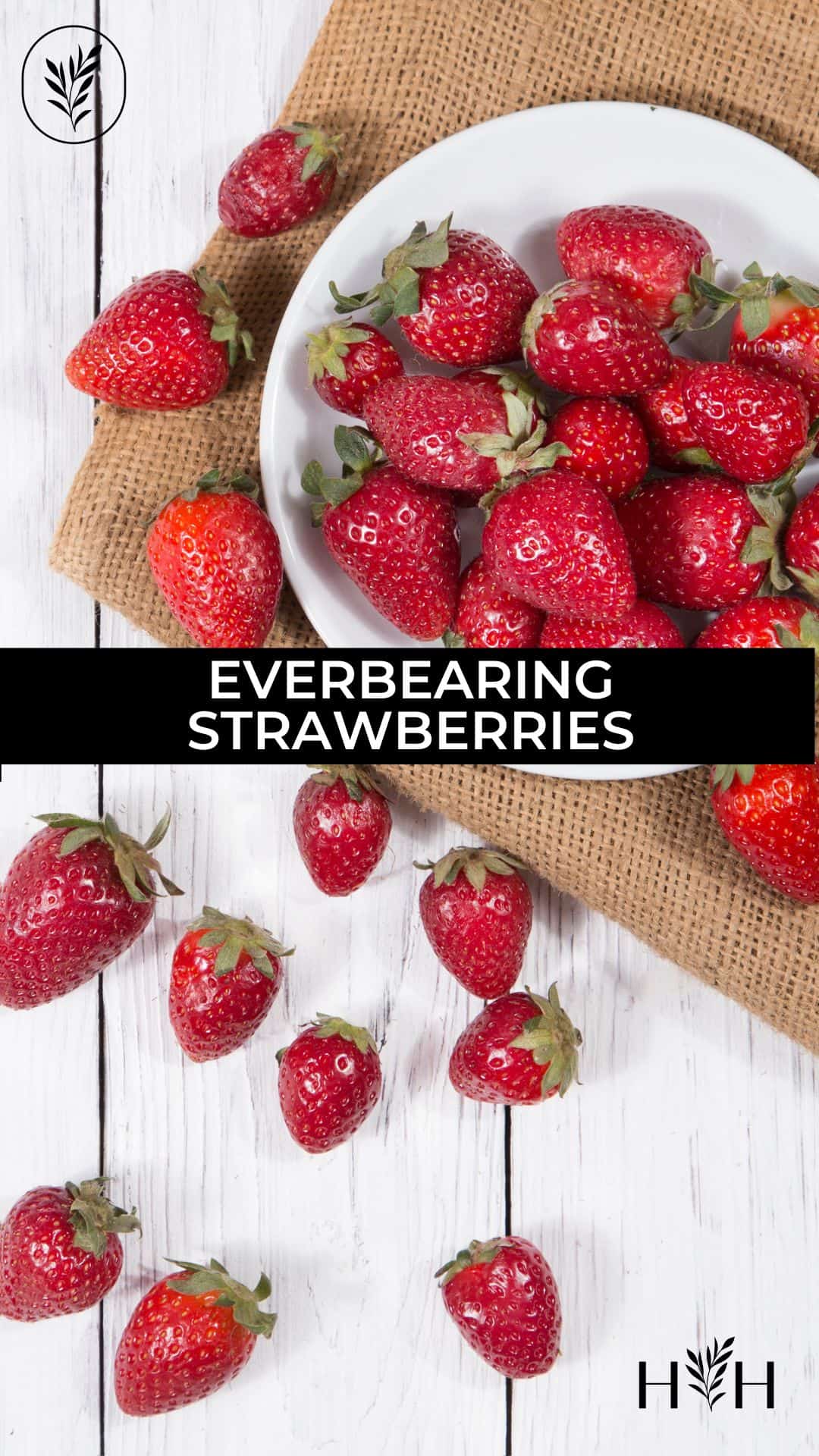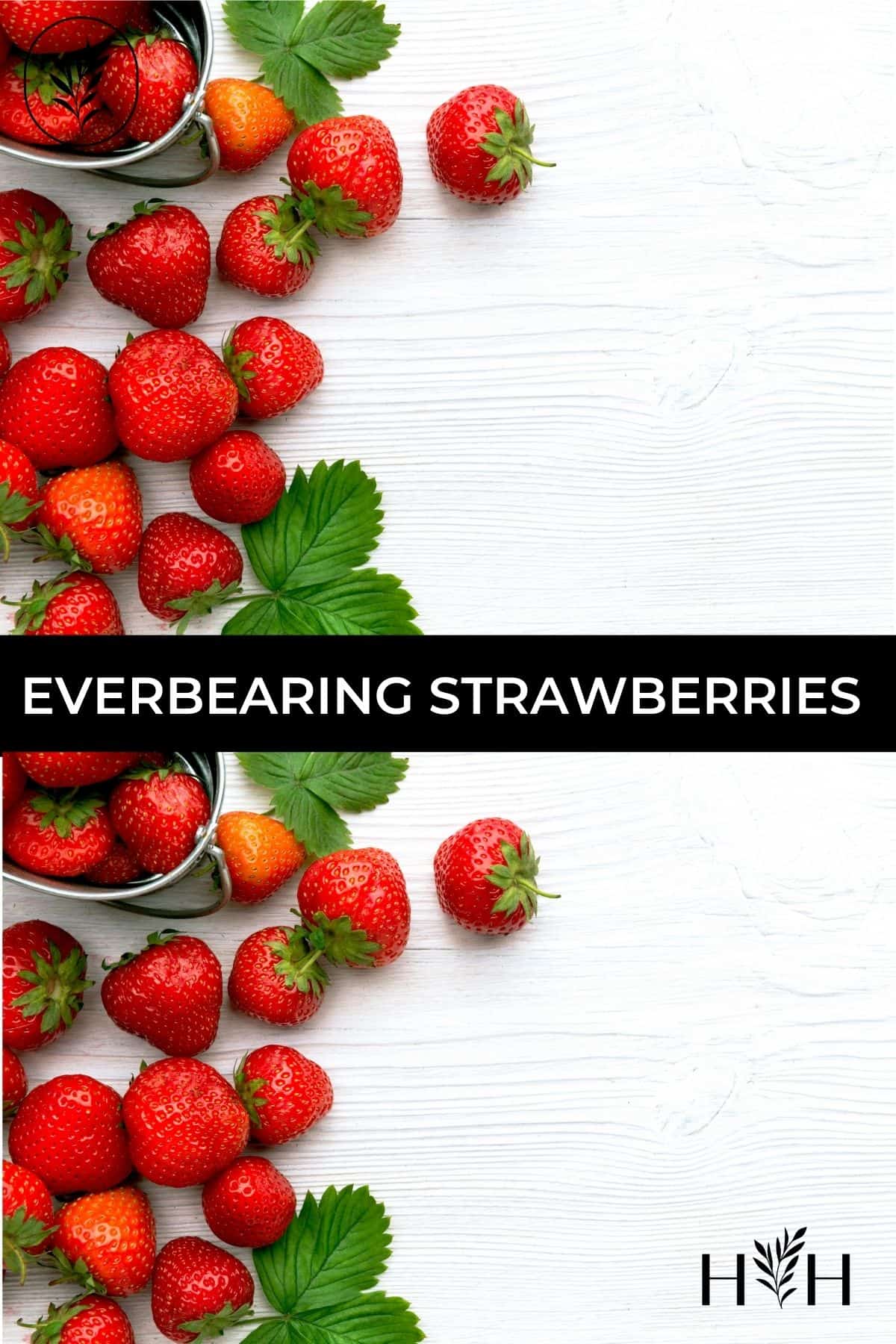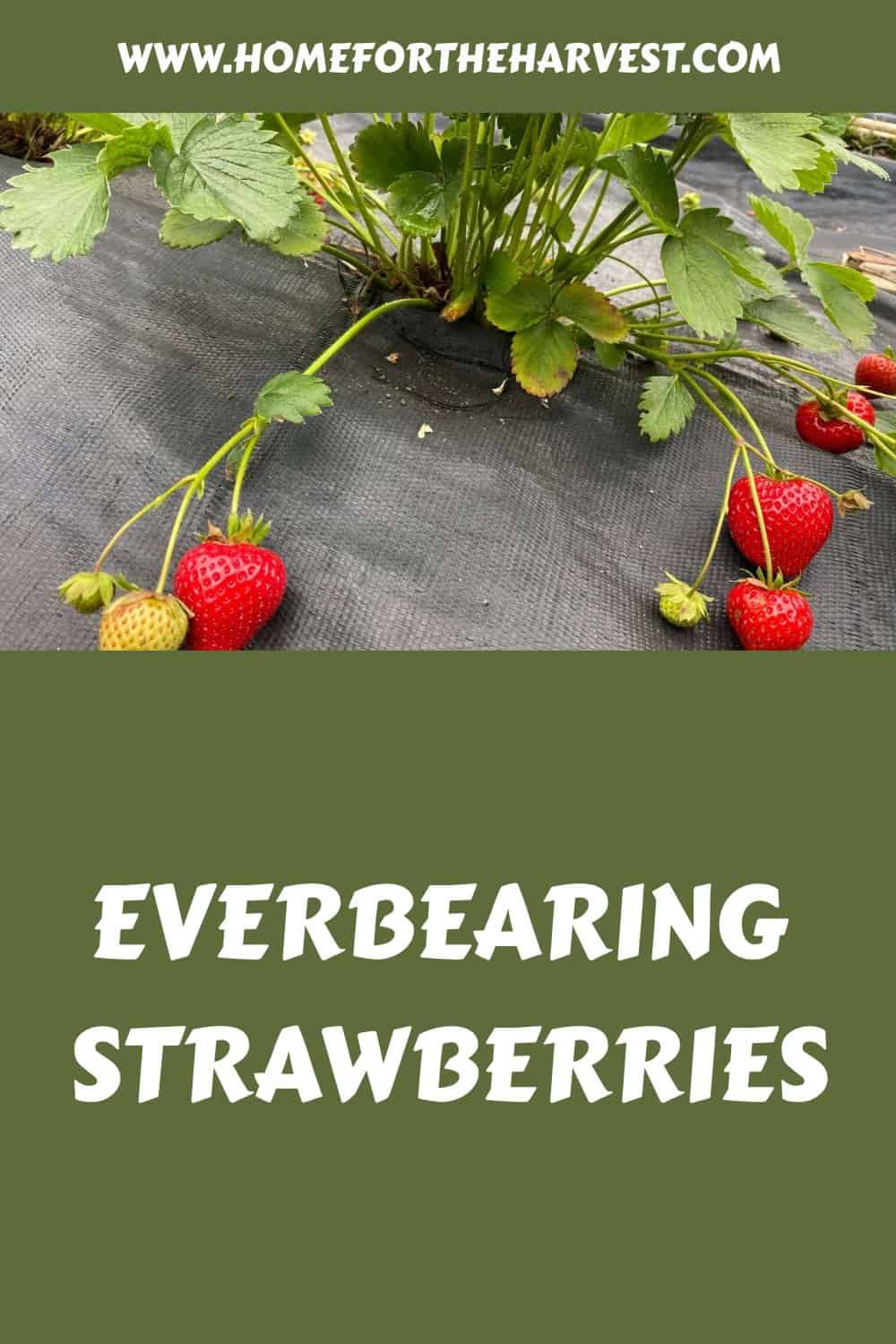Depending on where you live and the climate that surrounds you, there are different types of strawberry plants to consider growing.
Everbearing strawberries produce two crops of fruit: one in the early summer and one in the fall. The spring crops tend to be larger than the fall crop, and the overall annual yield of everbearing plants tends to be lower than the June-bearing plants.
Everbearing strawberries are a great option if you live in cooler, mild climates with moist soil or in a climate that tends to experience late spring frosts. You can also consider day-neutral strawberries, which act like improved everbearers.
Read on to learn all about everbearing strawberries!
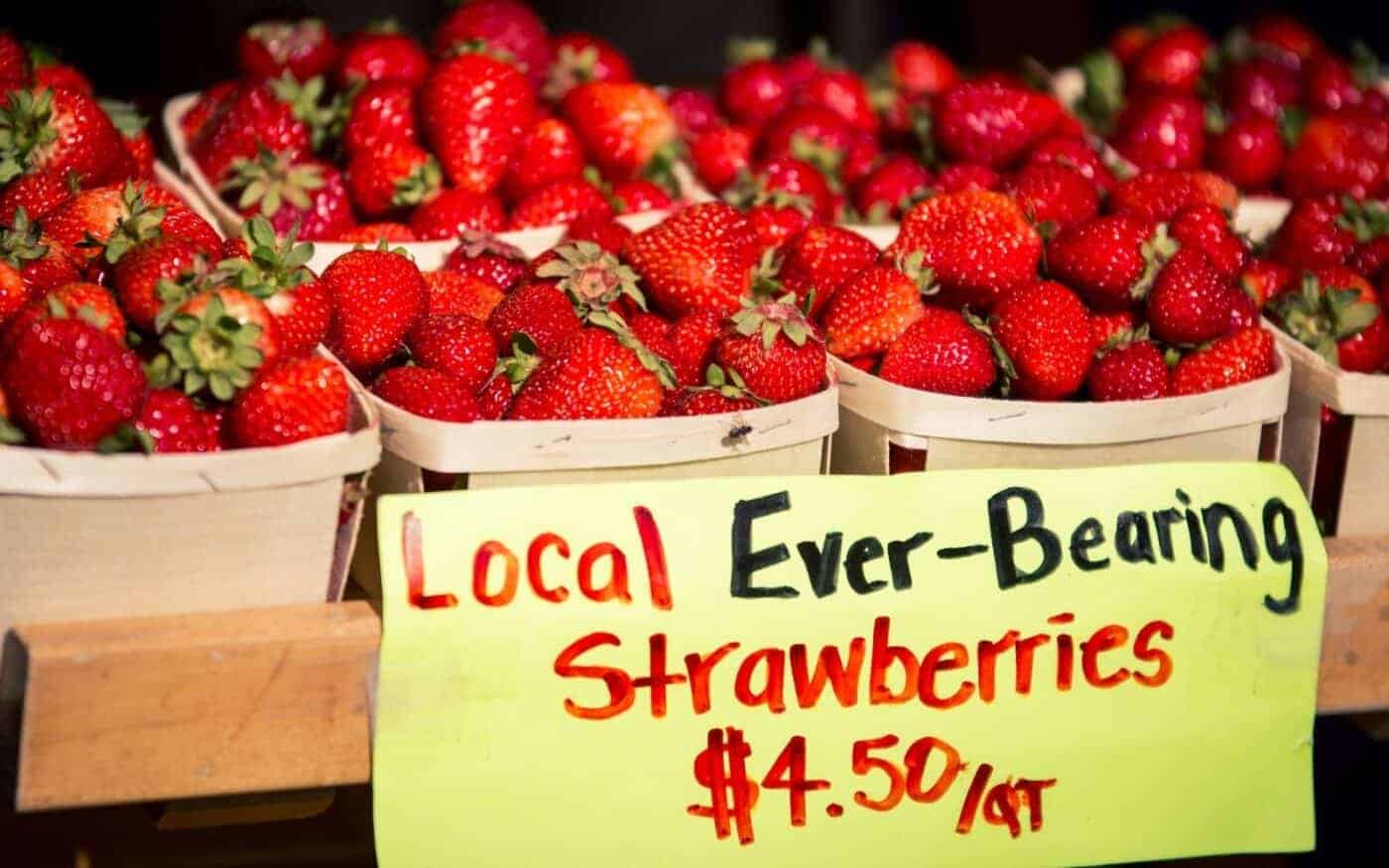
What are everbearing strawberries?
Everbearing strawberries, also known as “half-high” or “intermediate day-length” strawberries, are a type of strawberry plant that produces two crops of fruit per year. They typically produce a small crop of fruit in the early summer and a larger crop in the fall. Everbearing strawberries tend to be intermediate in size, falling between the smaller day-neutral strawberries and the larger June-bearing varieties.
Everbearing strawberries are a good choice for gardeners who want a longer fruiting season, as they produce fruit over a longer period of time than June-bearing strawberries. They are also a good choice for gardeners who live in cooler climates, as they can tolerate cooler temperatures and are less sensitive to day length than June-bearing varieties.
To care for everbearing strawberries, make sure to plant them in well-draining soil and provide them with plenty of sunlight. Water them regularly and fertilize them with a balanced fertilizer at the beginning of the growing season and again during the fruiting period. Prune off any dead or diseased foliage to keep your plants healthy. When the fruit is ripe, gently twist it off of the plant and enjoy it fresh or store it in the refrigerator for a few days.
Three classifications of strawberries
There are three classifications of strawberries: June-bearing, everbearing, and day-neutral. Day-neutral strawberries and everbearing strawberry plants are fairly similar, with a few differences.
Modern day-neutral cultivars are improved everbearers that tend to have better flavor, higher overall yields, and a longer harvest season. Most day-neutrals fruit from July-October, with the fruit coming in three “waves.”
Over time, you will notice different growing habits between the types of strawberries, but until then, make sure you label them appropriately and well. June-bearing strawberries produce berries only once a year. Day-neutral strawberries will be the only ones fruiting in mid-summer. Everbearers put on a second crop in early fall.
“The productivity and fruit quality of day neutral strawberries are much better than the old “everbearing” types, such as Ozark Beauty, and should be used in place of them.”
The University of Maine, Bulletin #2067, Growing strawberries
Growing everbearing strawberries
While some types of strawberries don’t do well with frost, everbearing strawberries aren’t as negatively affected. If June-bearers are hit with a late spring frost while the blossoms are out, the entire crop may be in jeopardy. Everbearers are still susceptible to late spring frosts, but at least the gardener gets that second (backup) crop.
Harvest the fruit as soon as it is ripe, starting in early spring. Everbearing strawberry plants will start to produce fruit during the first growing season. In contrast, June-bearers rarely fruit the first year.
The fruit of everbearers may be sporadic and not as abundant in the first year, but subsequent years will yield larger crops. As they get older, they will start developing less fruit. Everbearing strawberry plants will last about three to four years before they should be replaced with fresh plants.
“Everbearing – These produce two crops in one season: The first in late June and July and the second in late August and September. In shortest- season locations, the everbearing cultivars may not be appropriate.”
Montana State University, Strawberries in the home garden
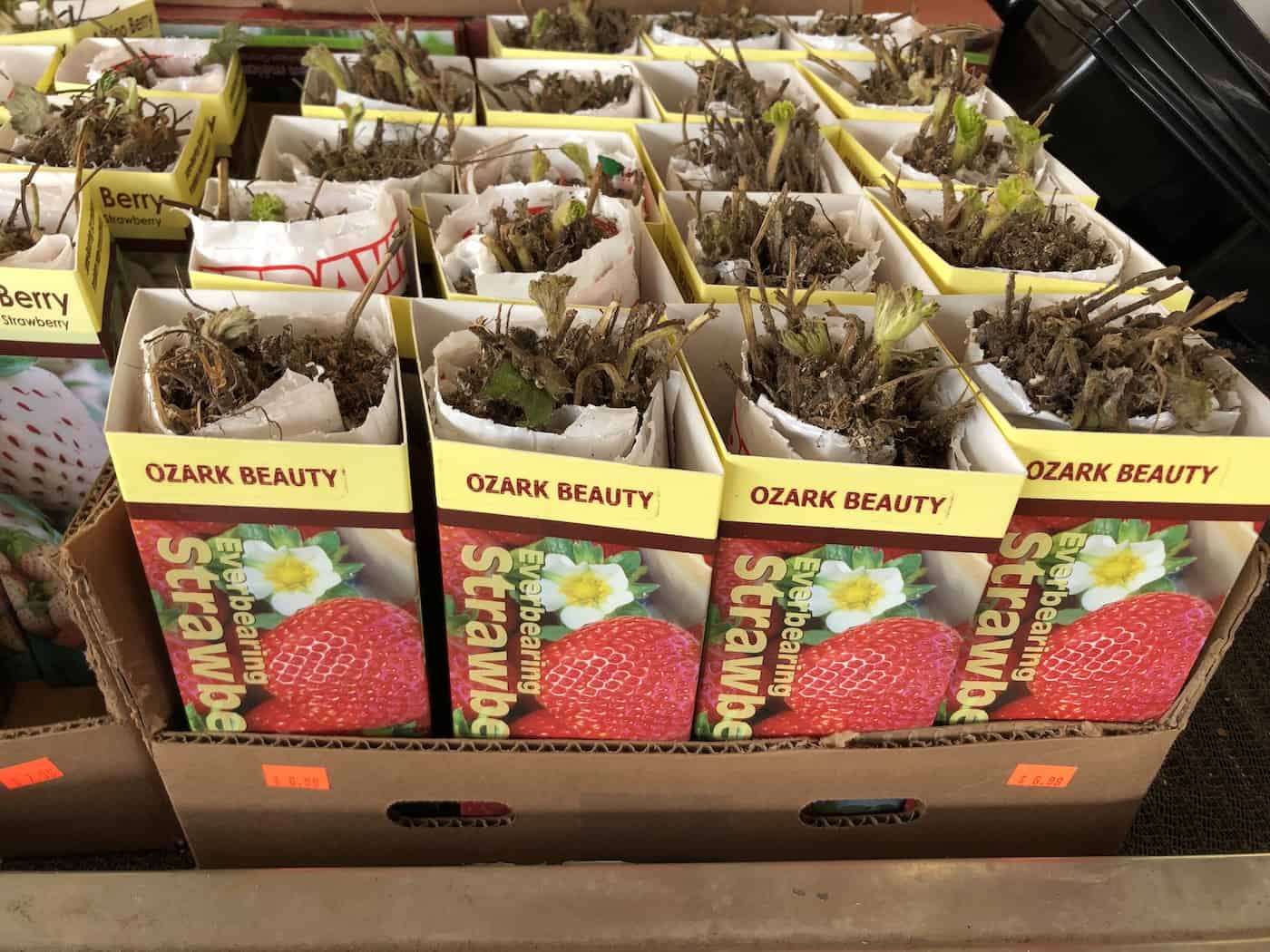
Popular varieties of everbearing strawberries
There are many popular types of ever-bearing strawberries on the market, but here are some of the best ones.
- Quinault
- Ozark Beauty
- Ogallala
- Fort Laramie
- Eversweet
Two of the most popular varieties are the Ogallala and Fort Laramie strawberry plants. These types do best in hardiness zones 4-8. These everbearing strawberry plants are sure to give you fresh strawberries all season long.
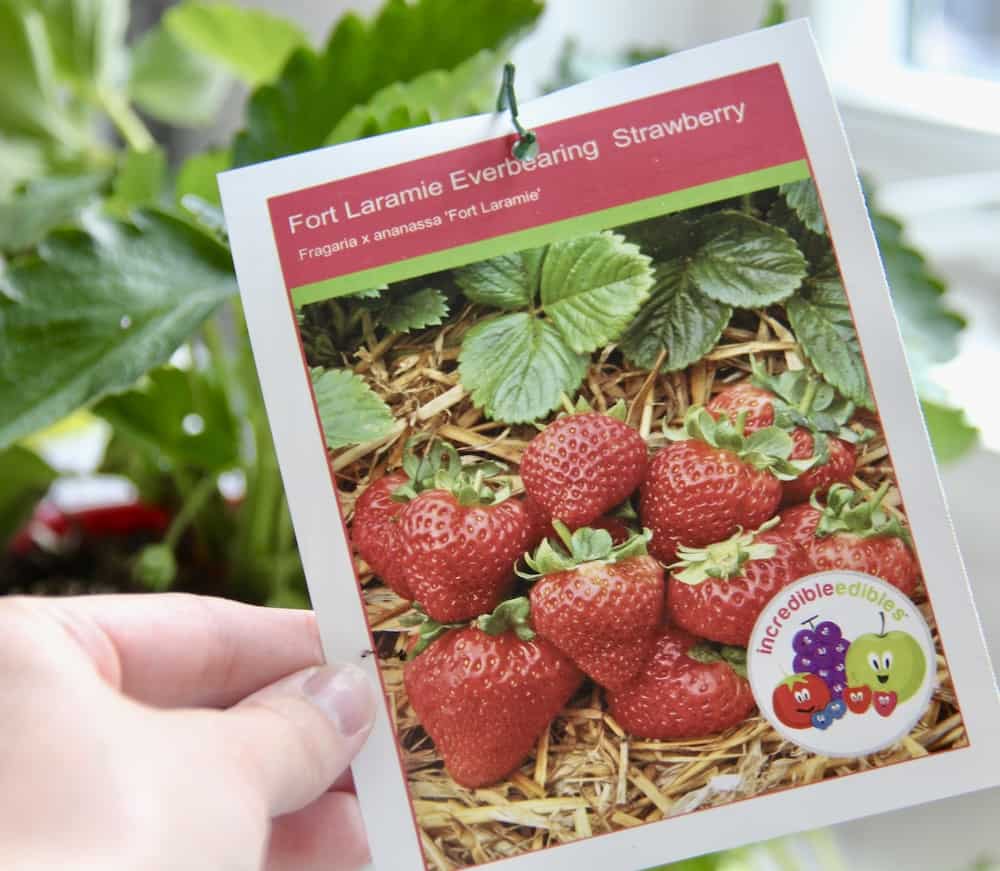
Tips for growing everbearing strawberries
The best time to plant everbearing strawberries is in the spring before the soil gets too wet. Strawberries prefer organically rich soil with a pH of 6.0 to 6.5. Clay soil is not the best choice, as strawberries prefer sandier soil. Make sure you do a soil pH test before planting your crop to ensure it will have optimal growth.
Everbearing strawberries are usually grown in a hill system. They are not grown in matted rows (like June-bearers) because they do not vigorously sprout runners. They prefer to produce multiple crowns at the base of the plant.
Each week, water your strawberries well. Give them about an inch of water each week. Water the plants to a depth of 6 to 8 inches. Having plenty of moisture will ensure your fruit grows to the best of its ability. Many gardeners use a drip irrigation system or a soaker hose to avoid rot. It is recommended to water strawberries early in the day so the sun can absorb excess water if needed.
To get full fruit, plant your strawberries in full sun. Make sure you keep weeds out of the garden, so strawberries get all of the nutrients they need to produce fruit. Remove weeds by hand or apply mulch to keep them from sprouting.
Common diseases to look out for in strawberry plants
Watch out for gray mold on the fruit of the plant. It will appear velvety and gray if the fruit gets too water-logged. Anthracnose fruit rot will appear black or brown. Both are a result of fungi and should not be consumed.
If you see small, dark purple spots on the surface of the leaves, your plants are likely diseased. The spots spread and kill the leaf of the plants. You may also see angular leaf spots on the underside of the leaves. The leaves can turn translucent and begin oozing liquid that dries white and scaly.
The crown and root of the plant can also become diseased if they get phytophthora crown rot. The crown of the plant will start to turn dark red. You will notice this first as the plant won’t grow and the young leaves wilt. As it advances, red and white marbling can spread across the crown of the plant.
FAQs about everbearing strawberries
What are everbearing strawberries?
Everbearing strawberries are a type of strawberry plant that produces two crops of berries per year. They typically produce a crop of fruit in the early summer and another crop in the fall.
Why should I consider growing everbearing strawberries?
Everbearing strawberries were the traditional choice for gardeners who want a longer fruiting season or who experience late spring frosts. More recently, gardeners have been choosing day-neutral strawberries instead of everbearing as they are like improved everbearers. Day neutrals give a continuous (truly “everbearing”) crop as compared to the two crops of everbearing-type varieties.
How do I care for everbearing strawberries?
To care for everbearing strawberries, make sure to plant them in well-draining soil and provide them with plenty of sunlight. Water them regularly and fertilize them with a balanced fertilizer at the beginning of the growing season and again during the fruiting period. Prune off any dead or diseased foliage to keep your plants healthy. When the fruit is ripe, gently twist it off of the plant and enjoy it fresh, freeze immediately, or store it in the refrigerator for a few days.
Can I grow everbearing strawberries in containers?
Yes, it is possible to grow everbearing strawberries in containers. Choose a container that is at least 12 inches in diameter and has drainage holes to allow excess water to drain away from the roots. Fill the container with a well-draining soil mix and plant your everbearing strawberry plants according to the instructions on the packaging. Water the plants regularly and fertilize them as needed.


